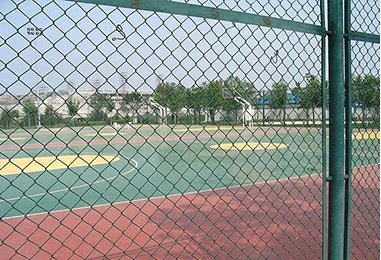 TEL:
+86-13102802206
TEL:
+86-13102802206
 Email:
fencenetting@china.com
Email:
fencenetting@china.com
 Language
Language
 TEL:
+86-13102802206
TEL:
+86-13102802206
 Email:
fencenetting@china.com
Email:
fencenetting@china.com
 Language
Language


The Versatility of Garden Fence Temporary Solutions
When it comes to maintaining a beautiful garden, safeguarding it from unwanted intruders—be they animals or people—is essential. Garden fences serve as an effective barrier, and exploring temporary garden fence options can be an excellent choice for many homeowners. Temporary garden fences provide an adaptive solution, allowing you to create an enclosed space for your plants while offering a flexible approach that traditional fences may lack.
Reasons for Considering Temporary Garden Fences
1. Flexibility One of the most significant advantages of temporary garden fences is their flexibility. Unlike permanent installations, temporary fences can be repositioned or removed entirely based on your gardening needs. For instance, if you're hosting a garden party or need to rearrange sections of your garden for a new planting project, a temporary fence can easily facilitate these changes without extensive labor.
2. Cost-Effective Solution Temporary garden fencing options are typically more affordable than their permanent counterparts. Whether you choose pre-made panels, mesh netting, or other temporary structures, the initial investment is often lower. This affordability makes temporary fences an ideal choice for renters or those who may not want to commit to long-term installations.
3. Seasonal Protection Gardens undergo various seasonal changes, with some plants requiring protection during specific times of the year. Temporary fences can be quickly erected to safeguard delicate seedlings from foraging animals in the spring or to shield mature plants from harsh winter winds. Once the threat has passed, these fences can be removed or adapted to meet changing conditions.
4. Environmental Considerations In today's eco-conscious world, many homeowners are looking for ways to make more environmentally friendly choices. Temporary garden fences can often be made from sustainable materials, such as reclaimed wood or biodegradable options. By choosing eco-friendly solutions, you minimize your impact on the environment while maintaining your garden's aesthetics.
5. Ease of Installation Homeowners and gardening enthusiasts appreciate that temporary fences are generally easy to install. Unlike traditional fencing that may require digging holes and concrete, temporary options can often be secured with stakes or weights, making setup a breeze. This ease of installation allows even novice gardeners to take charge of their garden’s security.

Types of Temporary Garden Fences
There are several styles of temporary garden fences, catering to different needs and aesthetics
- Mesh Fencing Often used in agricultural contexts, mesh fencing provides a lightweight and durable option to keep animals out while allowing sunlight and rain to reach plants.
- Wooden Panels Portable wooden panels can be moved around to create different layouts in your garden. They can also be painted or adorned with plants or decorations, adding to your garden’s charm.
- Plastic Fencing Available in various colors and styles, plastic fencing is resistant to weather elements and doesn’t require maintenance. These fences are easy to set up and dismantle.
- Garden Netting Ideal for protecting specific plants, garden netting can prevent birds and insects from invading your crops. It can be draped over frames or staked into the ground easily.
Conclusion
In conclusion, temporary garden fences provide an excellent alternative for creating boundaries around your cherished plants. Their flexibility, cost-effectiveness, and adaptability make them an appealing choice for homeowners looking to enhance their garden while maintaining ease of management. Whether you're protecting young seedlings, creating a designated play area for children, or simply beautifying your outdoor space, temporary options offer solutions that traditional fencing may not. Embracing the versatility of temporary garden fencing allows you to enjoy a vibrant, secure garden without the long-term commitment, making your gardening experience all the more enjoyable.